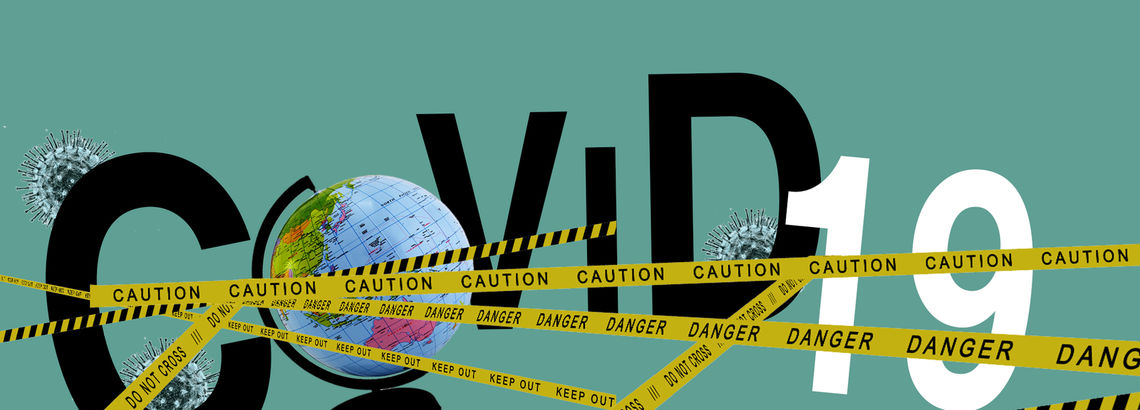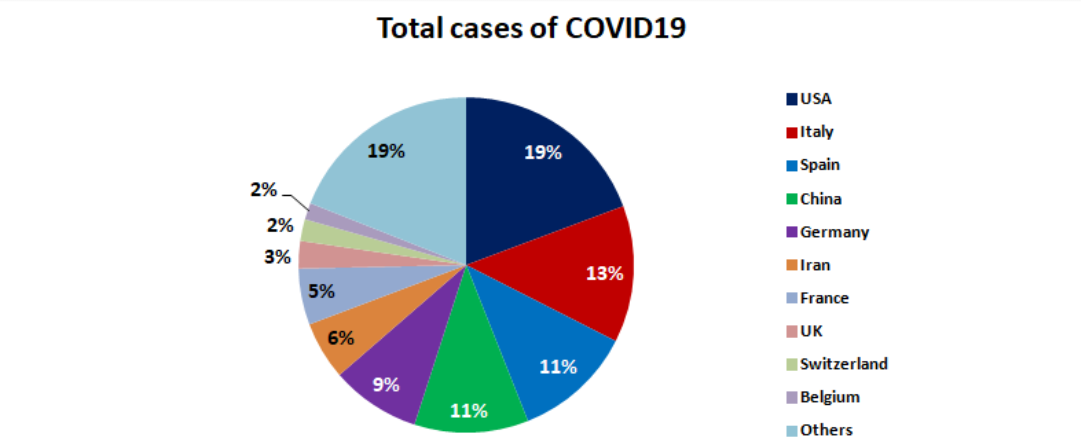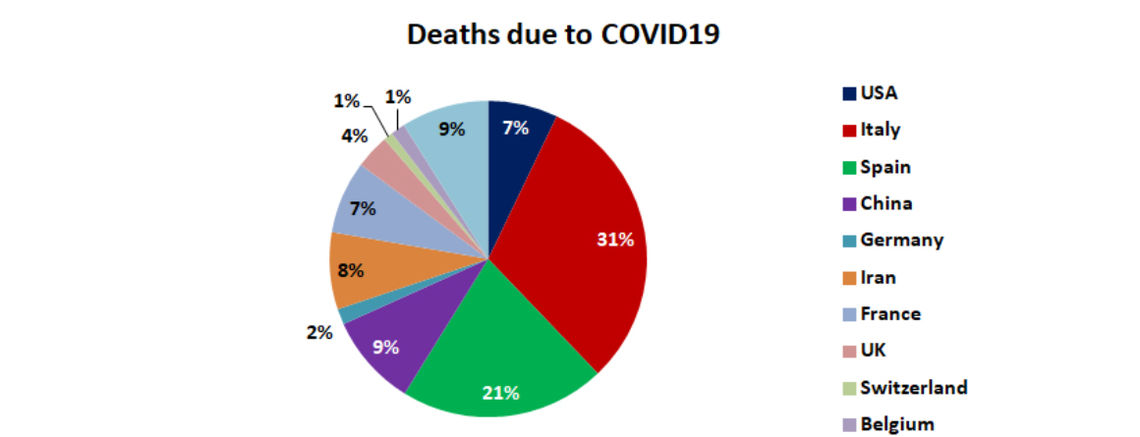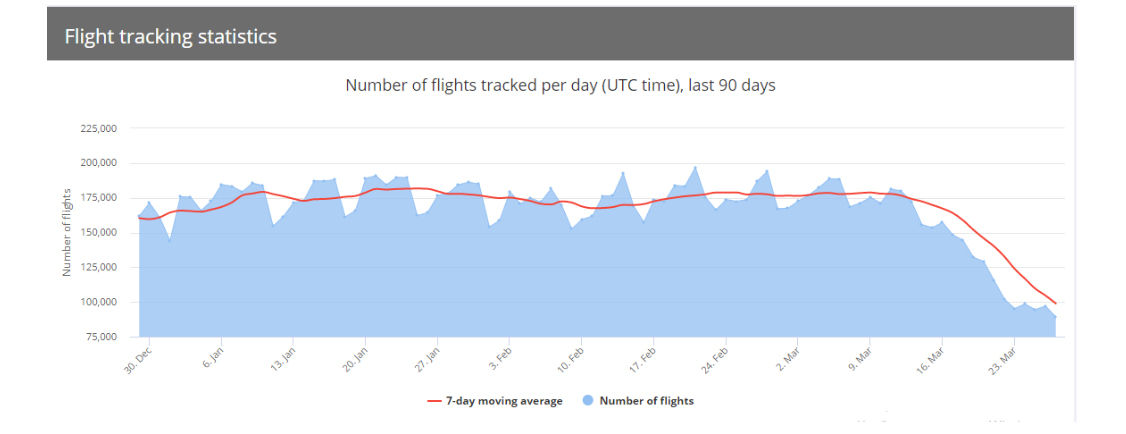
Coronavirus continues to spread around the world. As of March 31, 788,522 cumulative confirmed cases have been reported worldwide, 166,768 recovered and 37,840 were fatal. The following are the top ten affected countries: U.S., Italy, Spain, China, Germany, France, Iran, United Kingdom, Switzerland and Belg. The top four countries comprise more than half of the cases worldwide. Note that these are absolute numbers, not normalized to the size of a country’s population.

The list of the countries leading in the number of deaths is slightly different: Italy, Spain, China, Iran, France, U.S., United Kingdom, Netherlands, Germany and Belgium. About one third of all deaths in the world from the virus occurred in Italy.

Absolute numbers, however, do not provide a complete understanding of the spread of the epidemic. Let's compare the relative size of each country’s population affected. Such a comparative analysis requires that the population, as well as the proportion of people over the age of 65, be taken into account because the elderly and people with chronic diseases seem to be the ones most at risk.
Based on the statistics and the calculations made here, several conclusions can be drawn. The country with the highest death toll among the total number of infected people is Italy, which also has a high percentage of senior citizens. According to the World Bank, the countries with the highest proportion of their population being 65 and older are Japan (28%), followed by Italy (23%). Among the top ten COVID-19 countries, Iran and China have the lowest proportion of seniors.

Thus, the figures show that the most affected countries have about one fifth of their population over 65. However, there are some interesting facts to note. In Germany, which is close to Italy in terms of a high proportion of seniors (21%), only 1% of those infected have died. France is also close to Italy in terms of its elderly population, but it has recorded a much smaller number of infections.
The coronavirus mortality rate is often compared to death rates from other diseases. It should be noted that the data on coronavirus represents, in fact, a 3-month picture from the beginning of January to the end of March (December to March for China). According to the World Health Organization, as of 2016, the “probability (%) of dying between age 30 and 70 from any cardiovascular disease, cancer, diabetes, or chronic respiratory disease” in each country was: Italy (9.5%), Iran (14.8%), China (17%), France (10.6%), Germany (12.1%), South Korea (7.8%), Span (9.9%), Switzerland (8.6%), UK (10.9%), U.S. (14.6%).
Coronavirus has affected not only the health of the world's population but also the economy. The economic fallout because of the spread of the virus, according to World Economic Forum analysts, will be more severe than the 2007-2008 global recession, which was considered to be the deepest since the 1929 Great Depression. Because of the coronavirus pandemic, there has been a sharp decline in airline traffic, tourist flows, production volumes, retail sales and other economic indices, which is the start of a negative chain: falling demand-falling production-rising unemployment-falling demand.
The industry which has taken the brunt of the pandemic is tourism, with more than 100 countries[5] restricting the entry of foreigners to prevent possible outbreaks of the virus. In some countries, these restrictions are intended to apply for up to 30 days. Statistics on www.flightradar24.com clearly illustrate the situation.[6]

Coronavirus has had an impact both on products and services and on the global financial markets. The first economic consequences are already being felt in countries where the epidemic has been surging for a while now. China saw a sharp decline in manufacturing and services in February, with a much more pronounced decline in services. According to some estimates, the current situation may have serious consequences for China's economy, causing the first significant slowdown in growth in the last thirty years.[7]
The situation is also compounded by the economic interdependence of countries. Thus, since China is a producer and supplier of a number of intermediate goods, the economic decline in that country will undoubtedly lead to similar slowdowns in other countries.[8]
----------------
1-https://www.worldometers.info/coronavirus/#countries
2- https://www.worldometers.info/coronavirus/#countries
3- https://data.worldbank.org/indicator/SP.POP.TOTL?name_desc=false
4- https://data.worldbank.org/indicator/SP.POP.65UP.TO.ZS?most_recent_value_desc=true
5- https://www.bbc.com/news/business-51706225
6- https://www.flightradar24.com/data/statistics
7- https://www.nytimes.com/2020/03/16/business/coronavirus-china-economy.html
8- https://blogs.imf.org/2020/03/09/limiting-the-economic-fallout-of-the-coronavirus-with-large-targeted-policies/
also read
Distance Education in Times of Coronavirus
By Narek Manukyan
Educational institutions around the world are moving to online learning as the COVID-19 pandemic wreaks havoc. Narek Manukyan examines the Armenian education system’s preparedness for distance learning following the government’s announcement of a one-month state of emergency in the country.
Armenia Combats the Coronavirus: State Capacity and the Diaspora
By Dr. Shant Shekherdimian , Nerses Kopalyan
The experience of combating the coronavirus pandemic in Armenia can and should serve as an important foundation to develop long-term and institutionalized mechanisms of crisis management with the support of Diasporan experts and professionals.
City of Workaholics During COVID-19
By Tatevik Avetisyan
What is life like in one of the epicenters of the global coronavirus pandemic? In this essay, Tatevik Avetisyan, who has been living in Milan, Italy for more than a year, peels back the layers of the human condition.







EVN Report welcomes comments that contribute to a healthy discussion and spur an informed debate. All comments will be moderated, thereby any post that includes hate speech, profanity or personal attacks will not be published.